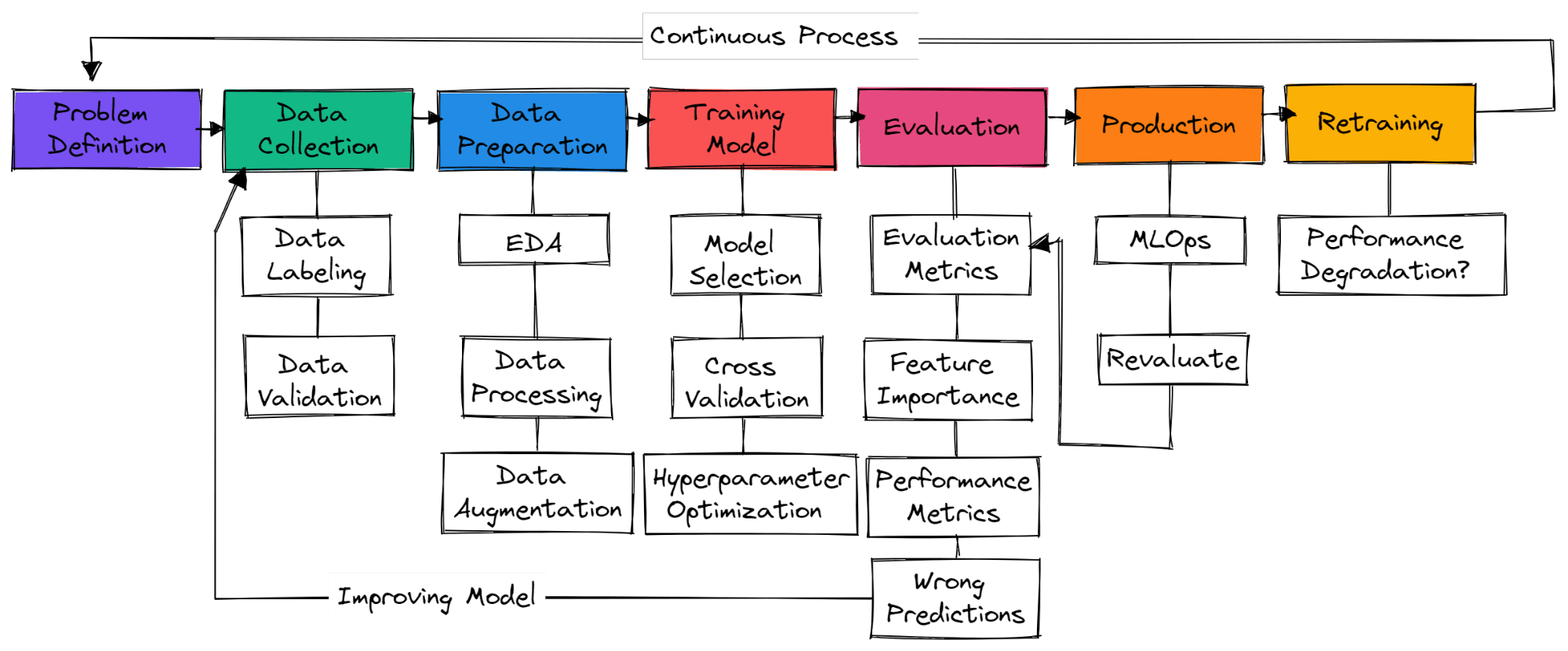Deploying Machine Learning Application to the Production
Deploying Machine Learning Application to the Production
The Deploying Machine Learning Application to the Production project is highly recommended for machine learning professionals looking for better opportunities in the field.
In this project, you will deploy machine learning applications on the cloud using Plotly, Transformers, MLFlow, Streamlit, DVC, GIT, DagsHub, and Amazon EC2. It is a perfect way to showcase your MLOps skills.

Image from Zoumana Keita
How to Start a Machine Learning Project?

Image by Author
There are no standard steps in a typical machine learning project. So, it can be just data collection, data preparation, and model training. In this section, we will learn about the steps required to build the production-ready machine learning project.
Problem definition
You need to understand the business problem and come up with a rough idea of how you are going to use machine learning to solve it. Look for research papers, open source projects, tutorials, and similar applications used by other companies. Make sure your solution is realistic, and data is easily available.
Data collection
You will be collecting data from various sources, cleaning and labeling it, and creating scripts for data validations. Make sure your data is not biased or contains sensitive information.
Data preparation
Fill missing values, clean, and process data for data analysis. Use visualization tools to understand the distribution of data and how you can use features to improve the model performance. Feature scaling and data augmentation are used to transform data for a machine learning model.
Training model
selecting neural networks or machine learning algorithms that are commonly used for specific problems. Training model using cross-validation and using various hyperparameter optimization techniques to get optimal results.
Model evaluation
Evaluating the model on the test dataset. Make sure you are using the correct model evaluation metric for specific problems. Accuracy is not a valid metric for all kinds of problems. Check the F1 or AUC score for classification or RMSE for regression. Visualize model feature importance to drop features that are not important. Evaluate performance metrics such as model training and inference time.
Make sure the model has surpassed the human baseline. If not, get back to collecting more quality data and start the process again. It is an iterative process where you will keep training with various feature engineering techniques, mode architects, and machine learning frameworks to improve the performance.
Production
After achieving state of the art results it is time to deploy your machine learning model to production/cloud using MLOps tools. Monitor the model on real-time data. Most models fail in production, so it is a good idea to deploy them for a small subset of users.
Retrain
If the model fails to achieve results, you will go back to the drawing board and come up with a better solution. Even if you achieve great results, the model can degrade with time due to data drift and concept drift. Retraining new data also makes your model adapt to real-time changes.